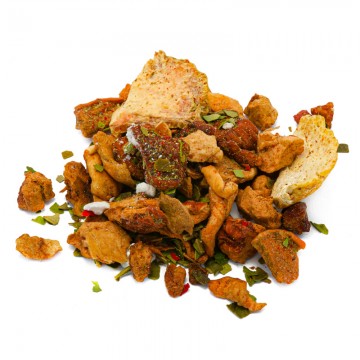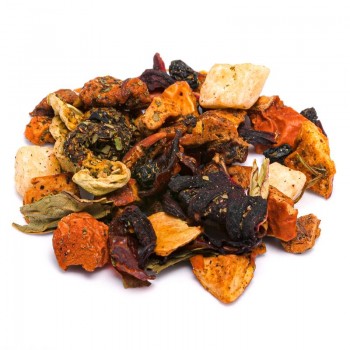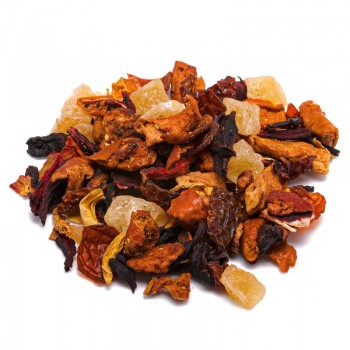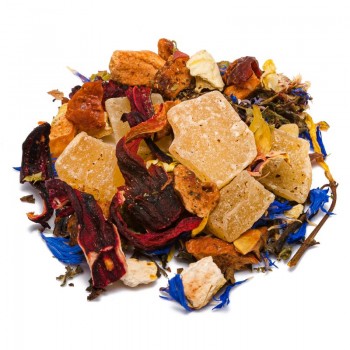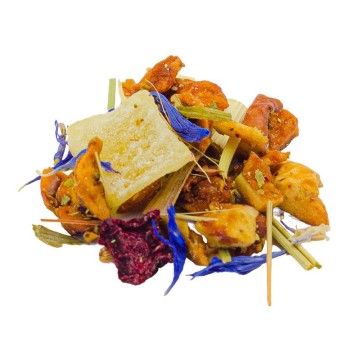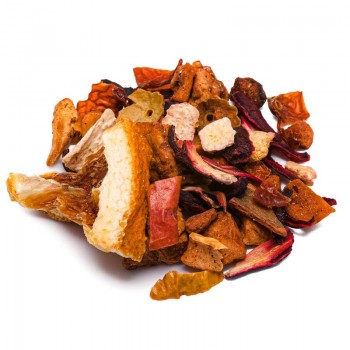Discover a blend that combines the nuances of strawberry with the sweet and slightly almondy ones of pistachios. The infusion combines fruity notes of pineapple and apple, inspired by summer flavors - a delicious touch in every season. The strawberry and pistachio pieces are perfect for those who love delicious and fine infusions, inspired by exotic and Mediterranean flavours. To obtain a unique blend, a few inserts of beetroot give a surprising color and a vegetal note, together with rose hips.
Pistachio and strawberry infusion: properties and benefits
By taking this infusion you can benefit from the antioxidant properties of strawberry, dog rose and beetroot; useful for supporting natural defenses. The digestive qualities of pineapple and apple promote the regularity of intestinal transit and the adequate absorption of nutrients if you consume the infusion after meals. Furthermore, the infusion can act beneficially as a supply of liquids and mineral salts, useful for promoting diuresis and counteracting water retention.
Origins and history of cultivation
Pistachios have been known to human consumption for centuries. Archaeologists believe that the first consumption of pistachios dates back as far as 7,000 years ago. They arise in warm climates, and the plant is native to central-western Asia (Iran, Afghanistan). As fruits, they appear in ancient literature and religious texts, mentioned in the Old Testament together with the almond. Indeed, in the past it was believed that they were one of the foods grown in the Garden of Eden. We know that the legend of the Hanging Gardens of Babylon speaks of pistachio trees (700 BC).
Over time, they were traded for their exceptional nutritional value and easy preservation. Travelers carried them along the Silk Road that connected China to the West. Pistachios reached Greece with Alexander the Great and arrived in other European countries with the Roman Empire. They were used both as a valuable and rare food and as a folk remedy for the liver and oral cavity. In the 19th century, the pistachio was introduced to Australia, New Mexico and California as a garden tree and is now considered a popular snack, enjoyed throughout the world.
Strawberries are fruits native to the temperate regions of the Northern Hemisphere, with multiple varieties grown throughout the world. The fruits we commonly consume derive in most cases from an evolution of the wild strawberry. This is the large-fruited strawberry (Fragaria ×ananassa) born in Europe in the 18th century, crossing the American varieties of the wild Virginia strawberry (F. virginiana) and the Chilean strawberry (F. chiloensis). Most countries have developed their own varieties of this hybrid to date, each adapted to the local climate.
Fruits and flowers contained in the infusion
Pistachio comes from the Pistacia vera plant, of the Anacardiaceae family. It is a small tree grown for its edible seeds, which grows well on arid soil and in warm-temperate climates. It shows very extensive branches and reaches about 9 meters in height. White drupe fruits grow in clusters and tend to split on one side without releasing the seed. The so-called pistachio is a greenish stone enclosed in a thin, tightly adhering reddish peel – it gives a kernel with a pleasant, slightly resinous flavour.
The strawberry belongs to the Fragaria genus, which includes over 20 species of flowering plants in the Rosaceae family. They are low-growing herbaceous plants, with leaves composed of three leaflets, with serrated edges, and white flowers (rarely reddish). The strawberry fruit is considered "accessory" from a botanical point of view, given that it is not a true berry. The pulp is made up of the receptacle of the enlarged flower, which incorporates the numerous actual fruits, the achenes commonly called seeds.
The Rose is a perennial plant of the Rosaceae family. There are over three hundred species and thousands of cultivars of this plant, famous for its flowers - which vary in size and colour. The fruit of the Rosa canina variety is fleshy and has a scarlet red color. It is the most common spontaneous rose species in Italy.
The apple plant is the Malus domestica of the Rosaceae family. It is a tree native to Asia, now widespread throughout the planet. The fruits diversify in colors and in many varieties, giving rise to apples that are also different in terms of the consistency of the pulp.
Ananas comosus is a tropical plant of the Bromeliaceae family. It grows best in well-drained soil with plenty of sun exposure. The fruitsThey have a shape that resembles a pine cone, and are formed by the union of flowers and berries of the plant, which combine to form a single fruit.
Beetroot is the Beta vulgaris plant, of the Amaranthaceae family. A fast-growing vegetable that is grown everywhere. All edible parts are exploited, but in particular the roots. The best-known beets are red, but there are golden and streaked varieties.
Nutritional values of the pistachio and strawberry infusion
The main active ingredients are the antioxidants and mineral salts released by the ingredients.
How to use the ingredients in the infusion The infusion is obtained by inserting approximately 3-5 grams of the pistachio mixture into a cup (250 ml) and strawberry with water at 100 °C. Leave to infuse for 10 to 12 minutes before drinking. Add honey or sugar, if desired.
Pistachio and strawberry infusion: side effects and contraindications
To avoid unwanted effects it is necessary to respect the recommended doses and not exceed the daily intake. Excessive consumption of the infusion can cause nausea, headaches, gastrointestinal disorders. Caution advised for pregnant or breastfeeding women.


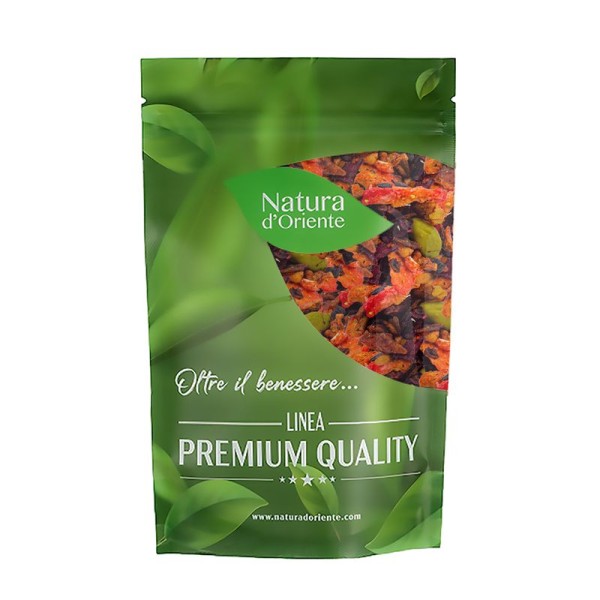










 No reward points for this product.
No reward points for this product.


